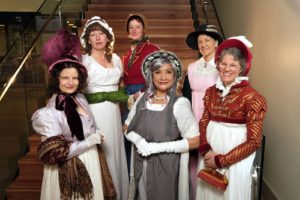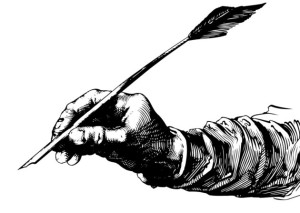Our friends with the Jane Austen Society of Northern California let us know that there was a mini-convention in the works for March, 2017, and we got prepared.
Our proprietor was able to find a suitable outfit to wear, created and loaned by creative and talented Lynn McMasters, who also created the outstanding Timeline of Fashionable Hats for Ladies and Gentlemen during the time period of Jane Austen, that was on display at the Public Library in San Mateo.
We had delightful historical and literary presentations by a number of members of the Jane Austen Society, live music and country dancing. Ann Morton provided delicious cakes and other desserts for our consumption. We had a game of Whist, presided over by Deborah Borlase. Our Proprietor offered a hands-on writing workshop for those who wanted to learn or revive their skills with the quill pen and ink, folding paper and sealing it with wax. We had a marvelous turn-out of all ages of people, met some old friends and made some new ones.
It’s now been requested that we help organize a program, like this one, as a fundraiser for the Vassalboro Grange in Maine, with Full Circle Farm founders Jody and Bernie Welch, our Proprietor’s sister and brother-in-law. So stay tuned, gentle readers, for more information about that event, coming your way in August, 2017.

